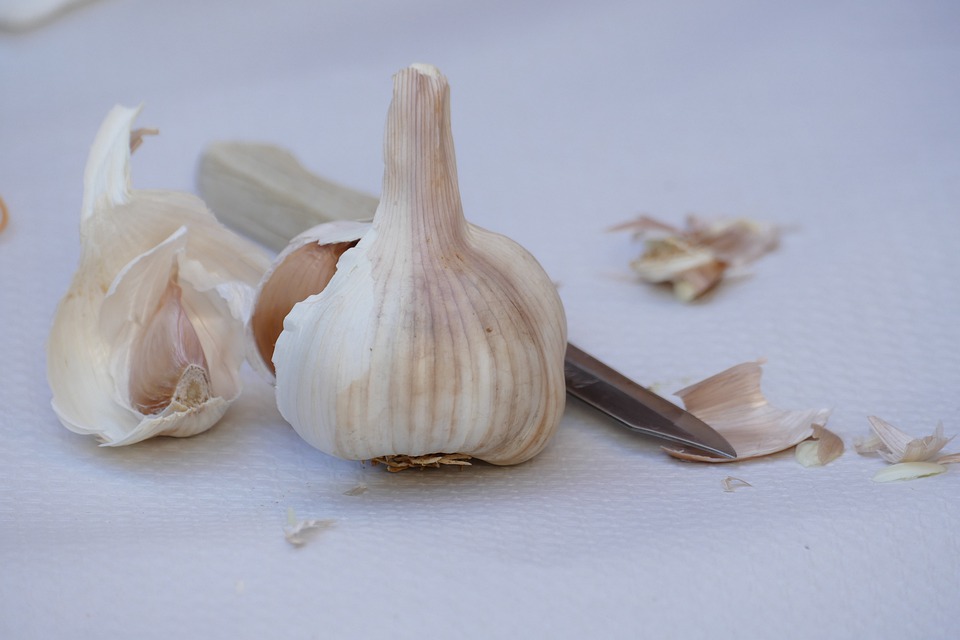Garlic: Food and Medicine
Both ancient history and a wealth of contemporary research support the use of garlic. More than 3,000 scientific papers cover its chemistry, pharmacology, and clinical uses. The therapeutic uses of garlic are extensive. But those specific to the cardiovascular system include reducing elevated cholesterol, preventing atherosclerosis and hypertension, treating poor circulation to the legs, and improving overall blood flow through antiplatelet actions.
One study involved two groups of subjects: one of 20 healthy volunteers and the other of 62 patients with coronary heart disease and elevated serum cholesterol. Both study groups ate garlic for six months. All involved experienced beneficial changes, which reached a peak at the end of eight months.
The improvement in cholesterol levels persisted throughout the two months of clinical follow-up. The clinicians concluded that garlic essential oil possesses a distinct hypolipidemic (fat-reducing) action in both healthy people and patients with coronary heart disease.
The importance of such findings in humans is something that research professionals pay close attention to. Several clinical comparisons of the influence of garlic have been published. In one example, a group of volunteers consumed a high-fat diet for seven days.
On day eight of the study, fasting blood was analyzed for the content of cholesterol and other fats. The subjects then received a high-fat diet supplemented with garlic for seven days; on day fifteen, fasting blood was analyzed again. Results showed that the fat-rich diet significantly increased cholesterol levels compared with a normal diet.
However, adding garlic to the high-fat diet significantly reduced serum cholesterol levels.15 Based on research investigating the effect of raw garlic on normal blood cholesterol levels in men, Indian researchers advocated its daily use as a means of lowering blood cholesterol.
It also possesses antiplatelet effects, or an ability to inhibit unnecessary clotting within the blood vessels. It appears to work by reducing the “stickiness” of blood platelets, decreasing platelet aggregation, and inhibiting the release of clotting factors in the blood. The garlic constituent thought to be responsible for this effect is allicin, simply a unique thiosulfate well known for its strong antibiotic and antifungal properties.
An interesting discovery shows that these vegetables work selectively, stopping the production of enzymes that help form plaques while leaving intact the production of important prostaglandins in the blood vessels. This finding suggests that garlic would make a safe and effective anti-thrombotic agent. Research backs up the traditional use of both garlic and onion in the treatment of hypertension.
While garlic has been found to be an element that provides exceptional benefits for human health, swallowing or consuming the same is not that easy. The simple reason is that the strong taste and smell can make many individuals throw up if they are asked to consume raw garlic. A probable and medicinal solution to the same would be to take the help of Gloup swallowing gel. It is a tasteless gel that can help you swallow down pods of garlic with ease. Since the gel does not have any chemicals, it does not react with the garlic in any way.
A study revealed that onion oil contains a blood pressure-lowering prostaglandin. Interestingly, while garlic’s antimicrobial effects are lost during cooking, its blood pressure-normalizing and cholesterol-lowering actions appear to be unaffected.
Garlic is the king of all healing plants. No other plant has enjoyed such a high reputation in so many countries and civilizations for such a wide range of ailments. Like cabbage, it has been the subject of intensive modern research, of which only a summary can be given here.
It is also valued as a wonderful general tonic, and in Russia, they eat it to keep old age at bay. It is antibacterial, antifungal, and antiviral, with almost no recorded side effects apart from irritation of the gut in some people sensitive to it. In Japanese research, no other plant except ginseng had higher natural concentrations of germanium, which promotes cellular uptake of oxygen; this helps account for its wide range of accredited powers.
In one of the earliest studies of garlic’s anti-cancer action, researchers in Ohio, USA, injected fresh sarcoma cells into a number of mice. Those who had previously received fortifying jabs of garlic extract were alive and kicking 180 days later. Those who had not died within 16 days Population studies confirm this protective effect.
In matters of the heart, garlic has been shown to act as an anticoagulant, lower blood pressure, and lower cholesterol levels. Onions share many of the therapeutic powers of garlic, though sometimes to a lesser extent.







